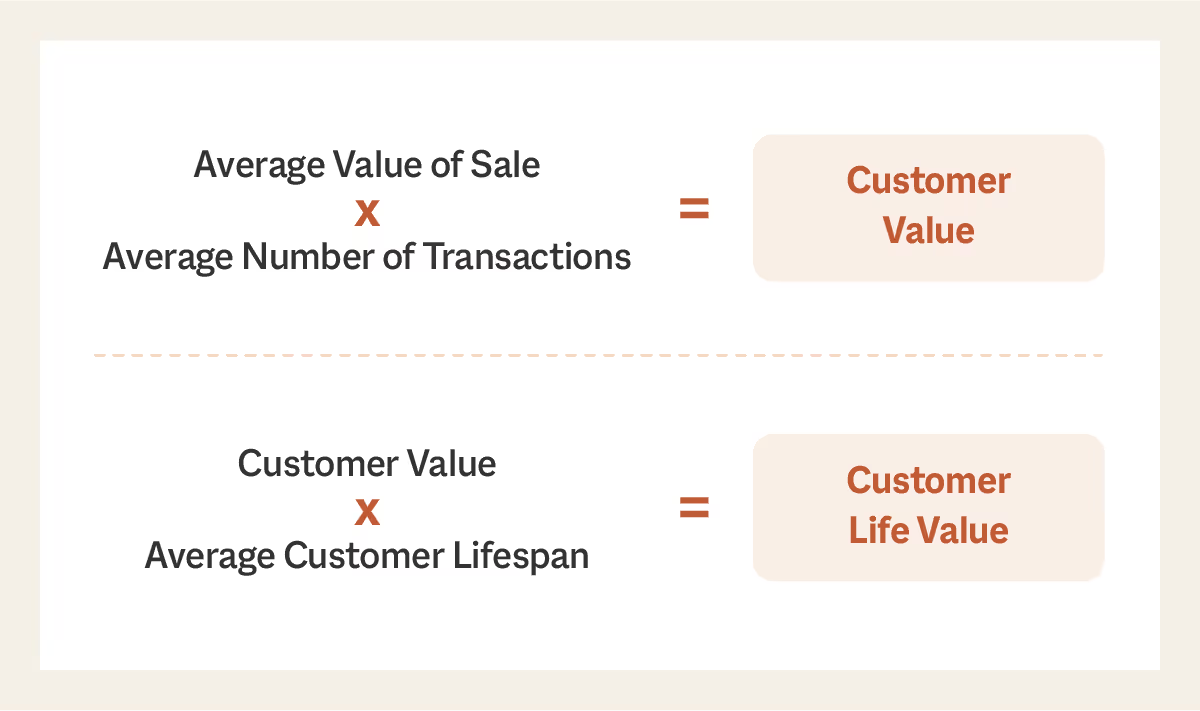Sales Efficiency: What To Know and 5 Ways To Improve It
Sales Efficiency: What To Know and 5 Ways To Improve It

How do you judge whether your sales outreach efforts are successful or not? If you’re only looking at generated revenue, you’re missing out on the important context that can improve your operations.
Sales efficiency is a metric that goes beyond revenue to determine how efficiently a business translates its resources into sales. Accounting for all of the costs it takes to make sales, this metric helps businesses understand successful outreach actions and any areas needing improvement.
In this article, we will cover sales efficiency in detail, including what it is, why it’s important, and how to improve your efficiency with outreach campaigns.
What is sales efficiency?
Sales efficiency is a metric that determines how efficient a business is at making sales with its current resources.
Factoring in all sales and marketing costs such as ad spend, employee salaries, relevant software, and more, this metric helps managers and business owners determine the effectiveness of their outreach efforts. Businesses with high sales efficiency should note what works and stay the course — and those with low sales efficiency should examine their processes to improve ROI.
How to calculate sales efficiency
Before you can identify opportunities to improve your sales efficiency, you need the ability to calculate it. Below, we highlight the sales efficiency formula and other important related metrics.
Calculating sales efficiency is a relatively painless process. Simply add together all of your sales and marketing expenses and divide that number by your revenue. The sales efficiency formula looks like this:

The variables that affect marketing expenses are different for every business, but they are any costs relating to your sales and marketing department. Examples of such costs include:
- Sales and marketing employee salaries
- Bonuses or spiffs
- Ad spend
- Software
- Lead lists or lead generation
- Employee training
- Overhead
To illustrate the formula, let’s run through a quick example.
Company A wants to calculate its sales efficiency for the previous quarter. After adding up employee salaries, ad spend, sales software expenses, and overhead, they determined their sales and marketing expenses were $500,000. Their gross revenue for the quarter was $750,000. Company A’s sales efficiency formula would look like this:
Sales efficiency = $750,000 / $500,000
Sales efficiency = 1.5 (or, 150%)
A standard rule of thumb is that any sales efficiency above 1 (or 100%) is a good ratio, and the business should stay the course. Sales efficiency below 1, however, indicates a business requires evaluation and improvements in their sales process.
That said, if you want an even easier way to determine the effectiveness of your outreach, check out our ROI calculator for outreach campaigns.
Other related metrics
Sales efficiency isn’t the only formula to determine how effective your outreach is. Below are two metrics that can work together with sales efficiency to determine the status of your operations.
Customer acquisition cost (CAC)
CAC is the total cost it takes a business to generate a new customer. It is the value of new customers divided by the expenses associated with sales and marketing such as employee salaries, ad spend, software, and more. The formula looks like the following:

Customer acquisition cost varies by business and industry, so there isn’t a certain cost or ratio you should shoot for. The important thing to note is that the lower your CAC, the higher your sales efficiency will be.
Customer lifetime value (CLV)
CLV is the projected lifetime revenue that each individual customer will contribute to your business. This includes things such as average purchase value, how long they stay a customer, how many times they purchase, and other relevant factors. To determine your customer lifetime value, use the following formula:

Customer lifetime value, like CAC, varies by business — the important thing, however, is that the higher the CLV, the better your sales efficiency will look.
Why is sales efficiency important?
Sales efficiency is important because it gives a full-scale picture of a company’s sales performance.
Rather than simply looking at quotas and other narrow benchmarks, sales efficiency accounts for all of the actions required to generate sales. From there, businesses can evaluate their sales process, from employee training to prospect closing, to improving operational efficiency. While sales efficiency isn’t a perfect metric, it gives businesses the information they need to continue their current sales success or re-evaluate their operations.
Sales efficiency vs sales effectiveness
These terms are often intertwined, but sales efficiency and sales effectiveness refer to slightly different concepts.
Sales efficiency, as we have touched on, refers to how efficiently a business is using its internal resources to generate revenue. Factoring in gross profit and the internal cost of generating sales, this metric measures the effectiveness of a sales and marketing team with the resources they have.
Sales effectiveness refers to a sales team’s ability to close prospects. This metric doesn’t factor in any internal costs — it merely looks at how effective a business is at moving prospects down the buyer's journey. Effective sales teams will close more deals than they lose, and ineffective sales teams will lose more deals than they close.

5 ways to improve sales efficiency
Now that we touched on the importance of sales efficiency, we will cover five ways to improve this metric in your operations.
1. Outsource
To improve sales efficiency, businesses need to reduce their sales and marketing expenses or increase their gross revenue. Outsourcing is a method that can help with both.
When businesses partner with a dedicated outsourcing team — like the outreach campaigns we offer at Smith.ai — they add capable sales professionals for a fraction of the cost of hiring and training full-time employees. These outreach teams contact leads on a business’s behalf, using a wealth of industry-proven techniques and processes to help convert more prospects and generate more sales opportunities.
Our team, for example, can engage, qualify, and convert leads at scale. Whether you are in need of setting appointments with new leads, promoting a special offer, registering clients for events, and more, our outreach capabilities can help you reach your business goals while keeping your expenses low.
2. Revisit previous goals
Every business should set short- and long-term outreach goals, and an effective way to improve sales efficiency is by revisiting those goals throughout the fiscal year.
When businesses revisit their goals, they can identify what is working in their outreach and what isn’t. Let’s say, for example, a business sets a short-term goal of converting 20% of all prospects that attended a virtual webinar. If the quarterly numbers in that category fall flat, businesses can revisit the goal in detail to determine what went wrong and how to improve their outreach processes for future success.
If your business is failing in a number of outreach goals, take an in-depth look to determine the root cause — and if you are hitting your outreach goals but still have sub-par sales efficiency, perhaps it’s time to prioritize more ambitious goals.
3. Enhance sales training
When evaluating sales efficiency, a business’s success relies in part on the efficiency of its sales reps.
Sales training is a crucial part of establishing successful sales personnel, and you should be mindful that reps receive the training they need. This should include not only onboarding and preliminary training, but further support such as evaluating sales calls, perfecting sales techniques, and ongoing sales coaching.
Look at your current training program and evaluate any opportunities for improvement. Do you provide any support to your reps after initial onboarding? Are you scheduling periodic meetings for coaching, support, and performance evaluation? If your training and development isn’t an ongoing process, you should examine your procedures and find ways to provide enhanced sales training and support.
4. Reinforce your ICP
You could have the most effective sales personnel in your industry, but if you aren’t targeting the right prospects, your sales efficiency will never be optimal.
An ideal customer profile (ICP) is a profile of the perfect customer for your business — in other words, these are the prospects that would see the most value from your offering. A quality B2B ICP will include several prospect traits such as industry, location, number of employees, budget, tech stack, what goes into their buying process, why they would be interested in your product/service, and more.
Sales and marketing personnel should perform every action with the ICP in mind. For marketing departments, craft ad campaigns, inbound marketing, and other prospect-facing content for the ideal customer to attract and resonate with them. Sales personnel should know the ideal customer through and through to best communicate and close them.
When a business operates with its ICP as a guiding principle, sales and marketing teams will operate more effectively.
5. Improve your sales playbook
A sales playbook is a business’s blueprint for closing a deal. Each organization should have a complete guide that influences sales and marketing actions along the customer journey like prospecting, qualifying, closing, and more.
If your sales efficiency is suboptimal, perhaps it’s time to look at your sales process in detail. Examine every touchpoint from first contact to closing to evaluate predefined key performance indicators (KPIs) and tactics. Maybe you find, for example, that actions at the top of the sales funnel are performing well, but those taken at the bottom of the funnel and close to the closing stage — such as following up on leads — are inefficient.
Your sales and marketing professionals are only as good as the blueprint and strategy you provide them, so it’s paramount that your sales process is streamlined and efficient.
Smith.ai can improve your sales efficiency
Sales efficiency is an important metric that businesses should keep an eye on. Revealing how effectively an organization translates its resources into sales can give important context to successful outreach tactics and any needed areas of improvement.
You can improve your sales efficiency in various ways, but one of the easiest is by taking advantage of the outreach campaigns we offer at Smith.ai. Our professional, North America-based virtual agents can engage, qualify, and convert your prospects using custom AI-driven workflows that maximize outcomes.
Book a consultation today to find out how Smith.ai can improve your sales efficiency.
Take the faster path to growth. Get Smith.ai today.
Key Areas to Explore
Technical Implementation Terms
Voice user interface (VUl) design
Speech recognition integration
Text-to-speech optimization
API connectivity and webhooks
Real-time data synchronization

Your submission has been received!








%20(1)%20(1).avif)





.svg)



